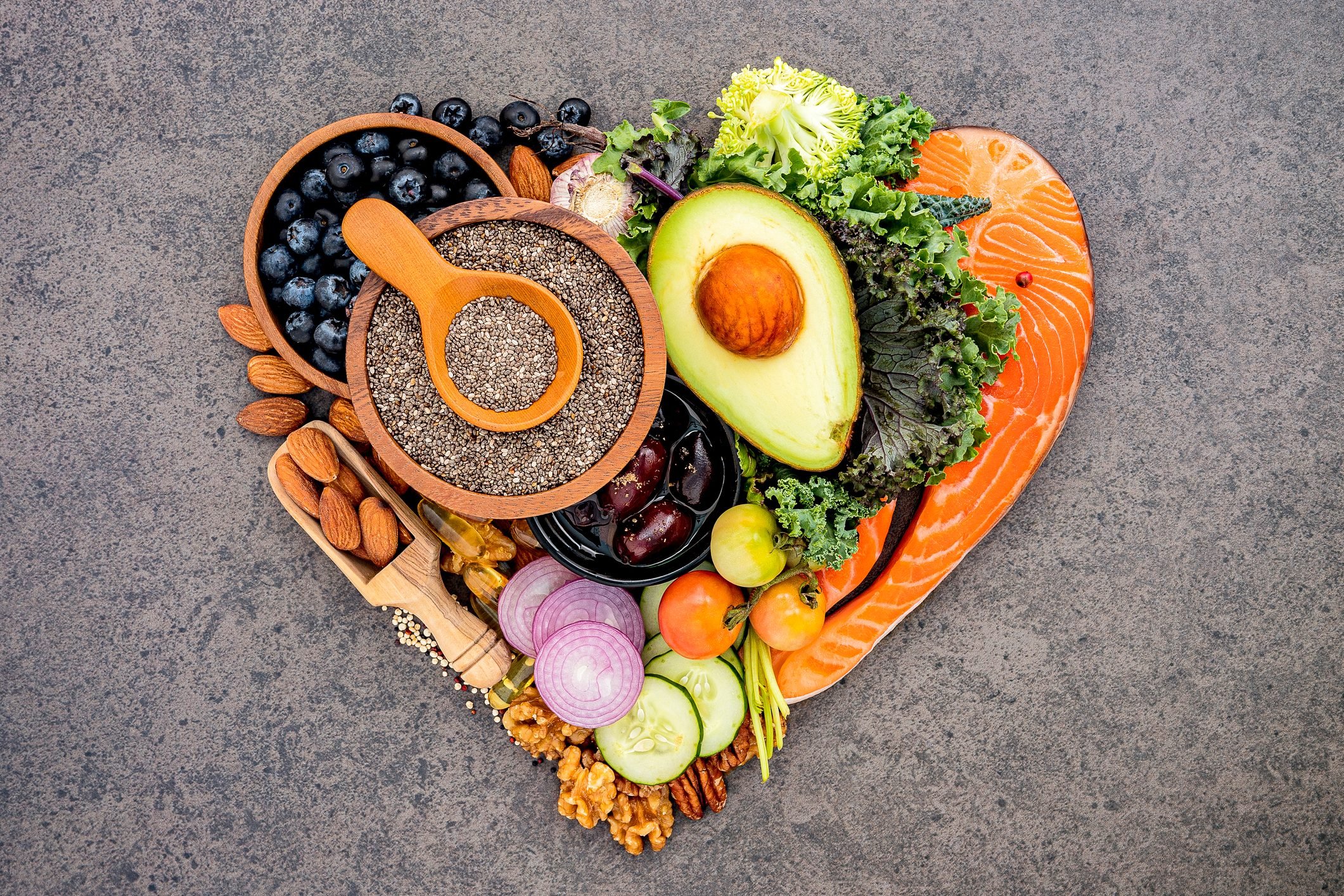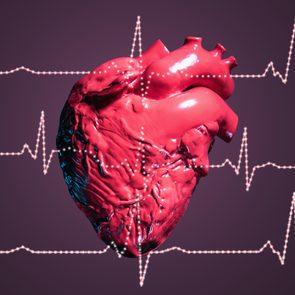Had a Heart Attack? These Are the 7 Foods You Need Now, From a Cardiologist and Dietitian
Updated: Feb. 23, 2022
You'll be inspired to eat well with these totally doable ways to reframe your diet for heart attack recovery (and future heart attack prevention).
One of your biggest priorities after having a heart attack is probably… not having another heart attack. This is a wise goal: According to the American Heart Association, one in five people who’ve had a heart attack will end up in the hospital with a second heart attack within five years.
This is because coronary artery disease, the most common cause of heart attacks, is a systemic disease which medical treatments and surgeries generally don’t fix. Instead, these treatments simply bypass it, says Andrew M. Freeman, MD, a cardiologist and associate professor at National Jewish Health who specializes in heart attack prevention and post-heart attack care. This means it’s essential to take your recovery very seriously, starting with a healthy diet following your heart attack.
“Look at your heart attack as an opportunity to pivot, to change your life to a healthier direction, starting with your diet,” Dr. Freeman tells The Healthy.
(Start with these 12 things to do for a healthy heart attack recovery.)
Preventing a second heart attack
Some factors that influence your risk of heart disease, like genetics, aren’t directly under your control. However, one thing you do have the power to change is your nutrition. Improving your diet is one of the five best things you can do for your heart, Dr. Freeman says. (In case you’re curious, the other four are 30 minutes of exercise per day, reducing stress, getting seven hours of sleep per night, and making strong social connections.)
This may feel overwhelming to think about as you’re recovering from your first heart attack. Fortunately, the things you do to recover from a heart attack are the same things you do to prevent another one, he says. Bonus: These practices can also help prevent a host of other diseases, including cancer and diabetes.
(It’s also important to stay current with your check-ups. These are the five medical tests for your heart that can save your life.)
Nutrition for heart attack recovery

Post-heart attack nutrition is all about reducing inflammatory foods while increasing heart-healthy foods, says Kim Rose, RDN, LDN, a registered dietitian nutritionist and licensed dietitian nutritionist who specializes in foods to avoid lifestyle illnesses, including heart disease.
List of foods to avoid after a heart attack
Certain foods can increase your risk of heart disease and cause inflammation through your body:
Salt
Eating too much salt raises your blood pressure and increases your risk of heart attack. One sneaky high-sodium food to avoid is packaged chicken breasts, advises Dr. Freeman.
Surprised? Some American meat processors regularly inject poultry with a salt water solution to make it more flavorful. Look for chicken that hasn’t been brined or injected.
Sugar
The sweet stuff may taste good, but sugar is one of the most inflammatory foods you can eat—and most of us are eating way, way too much of it, says Dr. Freeman. Not only is sugar bad for your heart on its own, but it contributes to weight gain and diabetes, which are both significant players when it comes to your risk for heart disease.
Need another reason to get those cravings under control? Read Here’s What Happens to Your Skin When You Eat Sugar.
Processed meats
Processed foods in general aren’t heart healthy, but you should especially avoid processed and cured meats like sandwich meats, bacon, sausage, and ham, says Rose. Plus, some research suggests processed meats may increase your risk of cancer as much as smoking does.
Saturated and trans fats
Animal fats, like those found in dairy, and trans fats found in processed foods, like chips and cupcakes, increase your bad cholesterol and triglycerides—two indicators of an increased risk for a heart attack, says Dr. Freeman.
The list of foods to eat after a heart attack
“I tell my patients to ‘eat like a peasant’,” says Dr. Freeman. This means selecting unprocessed, plant-based whole foods that are low in fat. (This tip is also one of the 44 things heart docs do to take care of their own hearts.)
Nuts and seeds
These goodies are high in omega-3 fatty acids which help protect the heart, says Rose. Plus, nuts and seeds are easy, portable snacks that don’t require refrigeration—perfect for keeping a baggie on hand instead of reaching for a candy bar.
Salmon and sardines
Fish are another food high in omega-3 fats and satiating protein, says Rose. She recommends one to two servings per week is plenty, as some fish, including “wild” varieties, are contaminated with toxic metals, plastic, and other pollutants. (For more, read The 7 Best Fish to Eat—and 5 to Never Eat.)
Green veggies
Most vegetables are good for the heart, but the real rock stars are green, leafy vegetables like kale and spinach, says Dr. Freeman. “A big salad full of colorful veggies and drizzled with some olive oil and balsamic vinegar is my go-to for a filling, heart-healthy meal,” he says.
Vinegar
Speaking of vinegar, the dressing on the salad is just as important as the salad itself. According to Dr. Freeman, vinegar in particular adds flavor and an extra dose of protection. “Vinegar has vascular benefits, lowering cholesterol and blood pressure,” he says.
Our sibling site, Taste of Home, offers a long list of healthy and delicious vinaigrette recipes.
All spices
Turmeric, black pepper, coriander, cinnamon, basil, and garlic are just a few of the spices shown to protect your heart. “Skip the capsules and learn to cook with these spices,” advises Dr. Freeman. “Many different cuisines use heart-healthy spices as delicious staples, like curries.”
Fiber
Oatmeal, potatoes, beans and other foods packed with fiber support your body as you recover from a heart attack, have heart-protective properties, and help you stay full so you won’t be tempted by less-healthy snacks, says Rose. (Check out This Hidden Oatmeal Benefit Could Lower Your Cholesterol, According to Research.)
Fruits
Fruits—particularly those lower in sugar and higher in fiber—are full of antioxidants, vitamins, and minerals to keep your cardiovascular system nourished and strong, Rose explains. Berries and apples get high praise, but it’s fine to eat grapes, pineapple, and bananas in moderation, too. (Lots of you loved reading The Banana Health Benefit You for Sure Weren’t Aware Of, Dietitians Reveal.)
Making the switch
We all understand that knowing what you should eat, and having those foods end up on your plate (and in your belly), can be very different things. Rose and Dr. Freeman offer The Healthy readers some pointers to inspire your healthy-eating discipline:
- Try “vegan until 6.” Eat only plant-based foods until 6:00 p.m. and then allow yourself some meat, cheese, or eggs at dinnertime. If you need some ideas, check out these vegan soup recipes.
- Experiment with different recipes… and if you’re stuck, call in a pro. Especially when you’re starting, it can help to have support from a dietitian specializing in heart health to help you meal-plan and locate great recipes. (To get your grocery list started, read 11 Potassium-Rich Foods for a Healthy Heart, From Nutrition Experts.)
- Let go of “perfect” and focus on “better.” Any healthy changes you can make will help you. It doesn’t have to be all-or-nothing.
- Don’t call it a “diet.” This isn’t something you do until you recover from your heart attack. These nutrition changes can help for the rest of your life.
Sign up for The Healthy newsletter for heart-health tips and lots more. Keep reading:



















